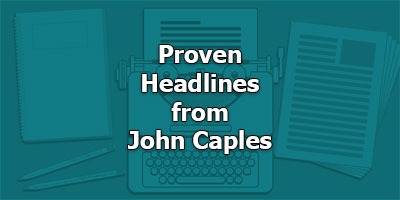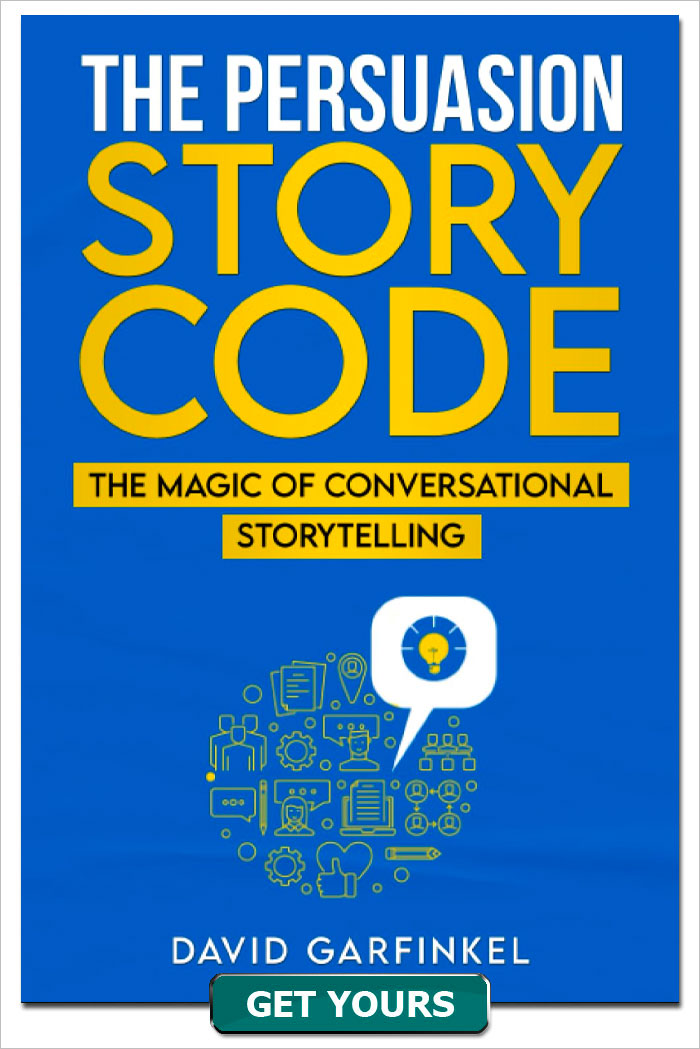Proven Headlines from John Caples - Old Masters Series
Published by: David Garfinkel on 09-12-2022
Tweet
Today we go deep into the headline wisdom of Old Master John Caples and his book “Tested Advertising Methods,” originally published in 1932.
What’s so important about this book for today’s show is, it contains a chapter called “Twenty-Nine Formulas For Writing Headlines,” and this chapter is pure gold, no fat.
It’s hard to appreciate the immense value of what he says in this chapter. I had to go through it several times to make it into podcast material. It’s clear and simple, but it’s dense.
In fact, there’s so much there that I couldn’t fit it into one podcast. We’d have to cover one formula a minute. Going that fast would make it incredibly hard to develop useful ideas. It would all go by in a blur.
So today is Part 1. We’ll cover 14 formulas. And we’ll cover the other 15 next week.
By the way, don’t get intimidated by the word “formulas.” While Caples is accurate in describing them that way, they’re MUCH easier to use and understand than you might imagine.
Now the headline formulas are in the last of four chapters about headlines. And it really makes sense to devote that much space in a book to the subject. Because headlines are BY FAR the most important part of your ad, and account for as much as 80% of how effective it is.
To put the formulas in context, let’s quickly talk about the key points in the three chapters that lead up to the fourth chapter. You could go horribly wrong if you didn’t follow the guidance he has in those three chapters.
The main thing he says is that headlines need to speak to the self-interest of the reader. Sounds simple enough, but so many headlines fail this simple test.
Because… what is self-interest?
In advertising, self-interest is what your prospect already wants or doesn’t want. Either something they want to move toward, or something they want to move away from.
We’ll have a number of concrete examples of this as we move forward. The most important thing for now to get is: you may think something your prospect should want, or needs to figure out is self interest—but it’s not.
Self-interest needs to be basically primal. Direct. Immediately recognizable.
Primal things people want to move towards are things like: Money, health, popularity, prestige, pride.
And primal things people want to move away from are things like: Threats, disrespect, loss of freedom, illness, pain.
Stuff like that. Remember, copywriting is about what people instantly respond to, not what you think they should respond to.
And all of this applies to headlines, especially.
Keep in mind what I just said as we go through the formulas and the examples. Curiosity, which definitely attracts attention, does not usually set the frame for the copy by itself the way a good headline needs to do. However, curiosity combined with self-interest can work wonders. Again, more about this in a minute.
And two other ingredients that work incredibly well when combined with self-interest are:
- Quick and easy
- News.
Here are the short-form formulas, which we cover in depth on today’s show.
1. Announcing
2. Announcement Quality
3. New
4. Now
5. At Last
6. Put a date in your headline
7. Write like a news headline
8. Feature the price in your headline
9. Feature reduced price
10. Feature special merchandising offer
11. Feature and easy payment plan
12. Feature a free offer
13. Offer information of value
14. Tell a story
and next week, we’ll cover the other 15.
Keywords: john caples headline templates









